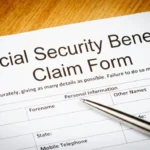Supplemental Security Income (SSI) is a federal program managed by the Social Security Administration (SSA) that provides monthly financial support to people who have limited income and resources. SSI is designed to help older adults, people with disabilities, and blind individuals meet their basic needs for food, clothing, and shelter.
Unlike Social Security Disability Insurance (SSDI), SSI benefits are not based on your work history or the amount of Social Security taxes you’ve paid. Instead, eligibility depends mainly on your income, resources, and living situation.
How SSI Works
SSI is funded by general tax revenues, not Social Security taxes. The program ensures a minimum level of income for people who meet the requirements. Payments are made monthly and may vary depending on where you live, as some states add extra money to the federal benefit.
You can use your SSI payments for essential expenses such as rent, food, transportation, and medical costs not covered by other programs.
Who Qualifies for SSI in 2025
To qualify for SSI in 2025, you must meet the following requirements:
1. Age or Disability Requirement
You must fall into one of these categories:
- Be age 65 or older, or
- Be blind, or
- Have a disability that prevents you from working and is expected to last at least one year or result in death.
For children under 18, the SSA evaluates disability differently, focusing on how the condition limits daily activities compared to other children the same age.
2. Limited Income
SSI is intended for people with little or no income. The SSA counts both earned income (wages, self-employment) and unearned income (Social Security benefits, pensions, or support from others).
However, not all income is counted. For example, the SSA may exclude part of your earnings, certain assistance payments, or food provided through SNAP (food stamps).
3. Limited Resources
To qualify, your total countable resources must not exceed $2,000 for an individual or $3,000 for a couple.
Resources include:
- Cash and money in bank accounts
- Stocks, bonds, and mutual funds
- Property other than the home you live in
- Vehicles (in some cases)
Certain items are not counted, such as your home, personal belongings, and one vehicle used for transportation.
4. Citizenship and Residency
You must be a U.S. citizen, national, or qualified noncitizen living in one of the 50 states, the District of Columbia, or the Northern Mariana Islands. You cannot receive SSI while living outside the United States for a full calendar month.
5. Application and Verification
Eligibility is determined through a detailed review of your income, resources, medical records, and living arrangements. You must apply directly with the SSA and provide supporting documents such as ID, proof of income, and bank statements.
SSI Payment Amounts for 2025
The federal benefit rate (FBR) for 2025 is expected to rise slightly due to the cost-of-living adjustment (COLA). The exact figures will be confirmed by the SSA in October 2025.
As of 2024, the FBR is:
- $943 per month for individuals
- $1,415 per month for eligible couples
Your actual payment may be lower if you have other income, or higher if your state adds a supplemental payment.
How to Apply for SSI
You can apply for SSI in one of three ways:
Online: Visit www.ssa.gov/ssi to start your application. You can complete most of the process online and upload documents digitally.
By Phone: Call 1-800-772-1213 (TTY: 1-800-325-0778) Monday through Friday, from 8:00 a.m. to 7:00 p.m. to schedule a phone appointment.
In Person: Visit your local Social Security office. Use the SSA Office Locator to find the nearest location. Calling ahead for an appointment is recommended.
Documents You Need to Apply
When applying for SSI, have the following ready:
- Proof of age (birth certificate or ID)
- Social Security card or number
- Proof of income (pay stubs, award letters)
- Bank statements and proof of resources
- Medical records and contact details for your doctors
- Proof of residence (lease or utility bill)
- Immigration documents (if not a U.S. citizen)
If you are missing certain documents, the SSA can help you get them. Do not delay applying because of missing paperwork.
What Happens After You Apply
After submitting your application, the SSA will review your information and may contact you for additional details. If medical records are needed, the SSA will request them directly from your healthcare providers.
You will receive a decision letter in the mail explaining whether your application was approved or denied. If approved, your first payment will typically arrive in the month following your eligibility date.
If your claim is denied, you have the right to appeal. You can request reconsideration online or contact your local office for assistance.
Continuing SSI Eligibility
Once you start receiving SSI, the SSA will periodically review your case to make sure you still meet the financial and medical requirements. You must report any changes in income, living situation, or medical condition promptly to avoid overpayment or suspension of benefits.
SSI and Other Benefits
Receiving SSI may also qualify you for other programs such as:
- Medicaid for health coverage
- SNAP (food assistance)
- Housing assistance programs
- Energy assistance through state or local programs
These additional benefits can further reduce your living expenses and improve your financial stability.
SSI remains one of the most important federal programs supporting Americans with low income and limited resources. In 2025, qualification rules continue to prioritize financial need and disability status rather than work history.
If you believe you qualify, apply as soon as possible to avoid losing months of potential benefits. You can check your eligibility, apply, and manage your benefits through SSA.gov or by calling 1-800-772-1213.


